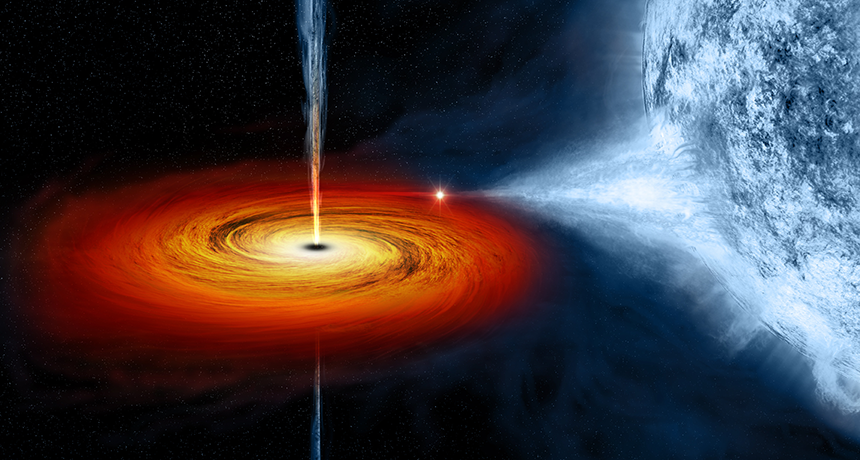astronomy The area of science that deals with celestial objects, space and the physical universe. People who work in this field are called astronomers.
black hole A region of space having a gravitational field so intense that no matter or radiation (including light) can escape.
density The measure of how condensed some object is, found by dividing its mass by its volume.
fuel Any material that will release energy during a controlled chemical or nuclear reaction. Fossil fuels (coal, natural gas and petroleum) are a common type that liberate their energy through chemical reactions that take place when heated (usually to the point of burning).
galaxy A massive group of stars bound together by gravity. Galaxies, which each typically include between 10 million and 100 trillion stars, also include clouds of gas, dust and the remnants of exploded stars.
gravity The force that attracts anything with mass, or bulk, toward any other thing with mass. The more mass that something has, the greater its gravity.
infrared A type of electromagnetic radiation invisible to the human eye. The name incorporates a Latin term and means “below red.” Infrared light has wavelengths longer than those visible to humans. Other invisible wavelengths include X-rays, radio waves and microwaves. Infrared light tends to record the heat signature of an object or environment.
mass A number that shows how much an object resists speeding up and slowing down — basically a measure of how much matter that object is made from.
microwaves An electromagnetic wave with a wavelength shorter than that of normal radio waves but longer than those of infrared radiation (heat) and of visible light.
Milky Way The galaxy in which Earth’s solar system resides.
physicist A scientist who studies the nature and properties of matter and energy.
planet A celestial object that orbits a star, is big enough for gravity to have squashed it into a roundish ball and has cleared other objects out of the way in its orbital neighborhood.
radiation (in physics) One of the three major ways that energy is transferred. (The other two are conduction and convection.) In radiation, electromagnetic waves carry energy from one place to another. Unlike conduction and convection, which need material to help transfer the energy, radiation can transfer energy across empty space.
spectrum (plural: spectra) A range of related things that appear in some order. (in light and energy) The range of electromagnetic radiation types; they span from gamma rays to X rays, ultraviolet light, visible light, infrared energy, microwaves and radio waves.
star The basic building block from which galaxies are made. Stars develop when gravity compacts clouds of gas. When they become dense enough to sustain nuclear-fusion reactions, stars will emit light and sometimes other forms of electromagnetic radiation. The sun is our closest star.
stellar An adjective that means of or relating to stars.
sun The star at the center of Earth’s solar system. It’s an average size star about 26,000 light-years from the center of the Milky Way galaxy. Also a term for any sunlike star.
telescope Usually a light-collecting instrument that makes distant objects appear nearer through the use of lenses or a combination of curved mirrors and lenses. Some, however, collect radio emissions (energy from a different portion of the electromagnetic spectrum) through a network of antennas.
universe The entire cosmos: All things that exist throughout space and time. It has been expanding since its formation during an event known as the Big Bang, some 13.8 billion years ago (give or take a few hundred million years).
white dwarf A small, very dense star that is typically the size of a planet. It is what is left when a star with a mass about the same as our sun’s has exhausted its nuclear fuel of hydrogen, and collapsed.
X-ray A type of radiation analogous to gamma rays, but having somewhat lower energy.








